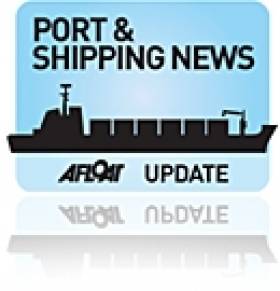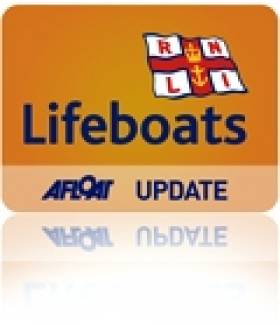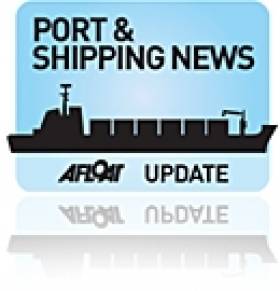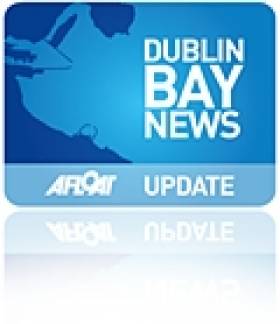Displaying items by tag: Royal Navy
HMS Cumberland Returns to Libya On Evacuation Mission
The Royal Naval frigate HMS Cumberland (F85) departed Malta today, to conduct a second evacuation mission of stranded nationals in Libya. In the early hours of this morning, HMS Cumberland had arrived into the Grand Harbour, Valetta, Malta with 207 stranded people, after departing the port of Benghazi on Thursday, writes Jehan Ashmore.
According to the Commanding Officer, Captain Steve Dainton, said: "The ship's company have responded magnificently. Ten days ago we were off the coast of Somalia conducting counter-piracy operations. I think it gives an indication of the flexibility and the versatility of a British warship and indeed of the ship's company onboard."
Following the first evacuation, HMS York was expected to arrive in the vicinity of the Libyan coast, should further assistance be required by HMS Cumberland. To read on the latest developments click here and this link too.
In addition the US authorities had chartered a fast-ferry catamaran to bring back stranded US nationals and other nationalities from Tripoli, the capital of Libya. The fast-craft vessel arrived in Valetta last night.
As the crisis was unfolding in Libya, HMS Cumberland was returning to the UK via the Suez Canal after completing a four-month operation in the Gulf, where her duties included helping to protect Iraqi oil platforms. The installations account for nearly 90% of Iraq's national income.
A sistership of HMS Cumberland, the 1986 built frigate, HMS Chatham (F87) was the last Royal Naval visitor to call at Dublin in late November
(click here and for photo).
At the time of HMS Chatham's visit to the capital, the 1988 built frigate had recently returned to UK waters, after also been engaged on anti-piracy duties, while off Somalia.
When HMS Cumberland has completed duties off Libya, the frigate, as originally planned is due to resume her voyage home to UK waters. The British Ministry of Defence are to decommission the 23-year old vessel.
Both frigates are 'Broadsword' Type 22 Frigates (Batch 3) along with HMS Campeltown (F99) HMS Cornwall (F86). All four frigates were launched during the mid 1980's and have a crew of 250-sailors.
Destroyer's Last Visit to Liverpool
The Royal Navy destroyer HMS Manchester is on its last visit to Liverpool, prior to its decommissioning. The Type 42 destroyer is currently berthed at the Liverpool Landing Stage, where she will be open to the public tomorrow (Sunday) between 12 noon and 4 pm.
One of the most notable actions of the warship's three decades in service was during the Gulf War in 1991. The destroyer was engaged in the Persian Gulf. This was primarily to uphold the trade blockade imposed on Iraq during that country's invasion of neighbouring Kuwait.
Special River-Explorer Cruise's run by Mersey Ferries are scheduled for tomorrow. The cruises will provide an opportunity to sail close to the HMS Manchester, which is berthed alongside the Liverpool Landing Stage.
The cruises are scheduled to run between 11 am to 4pm and they include a live commentary from a Blue Badge Guide. On these cruises the normal ticket price applies. For further information contact Mersey Ferries for timetable and ticket fares on 0151 330 1000 or logon to www.merseyferries.co.uk
Royal Navy Anti-Piracy Frigate Visits Dublin Port
The Royal Navy's Type 22 frigate HMS Chatham (F87) which recently returned to UK waters after a seven month deployment on anti-piracy duties off Somalia, visited Dublin Port last weekend, writes Jehan Ashmore.
HMS Chatham was the lead vessel for NATO's 'Operation Ocean Shield' as part of a multi-national task force in the seas off the African state that in recent years has become notorious for piracy.

HMS Chatham departs Dublin Bay and the rocks off Dalkey Island. Photo: Jehan Ashmore /ShipSNAPS
The frigate departed Dublin on Monday afternoon and set an easterly course off the Baily Lighthouse, but surprisingly the 5,300 tonnes vessel returned into the bay. HMS Chatham then crossed the bay towards Sandycove. From there the 148m vessel which has a draft of 6.7m veered in a south-easterly direction, to sweep past off the rocky outcrop, to the north of Dalkey Island and continued southbound off The Muglins.
In mid-November the frigate visited her namesake port on the Medway to mark the 20th anniversary since the vessel's commissioning at Chatham in 1990. The occasion was also the first time that such an event had taken place outside a Royal Navy establishment.
Built in 1988, the vessel was launched from the Swan Hunter shipyard on the Tyne and is normally based in her homeport of Devonport, Plymouth.
Red Bay Lifeboat Crew Provide First Aid to Collapsed Man at Fair Head
Lifeboat crew with Red Bay RNLI put their first aid training into practice this afternoon when a man collapsed while out walking in Boulder Field at Fair Head in County Antrim. The two lifeboat crew had to scale 150 feet of rocky headland to reach the two men who had been out walking and to administer first aid to the casualty.
Red Bay RNLI lifeboat was launched at 3.55pm to the incident and on arrival at the scene the lifeboat crew were able to locate the two men among the rocks. Two lifeboat volunteers left the lifeboat with first aid equipment to give assistance to the casualty. However to reach the men they had to climb 150 feet up the rocky terrain. The Royal Navy helicopter Rescue 177 from Prestwick arrived a short time later with a paramedic and was able to stabilise the casualty and winch both him and the other man aboard and bring them both to Coleraine Hospital.
Commenting on the callout Red Bay RNLI lifeboat helm Paddy McLaughlin said, " Thankfully we are very familiar with this area and two of our lifeboat crew were able to use their first aid training and go to the assistance of the casualty. This is not an easy area to access and the two men had been out walking since breakfast."
Last August Red Bay RNLI lifeboat crew brought a brother and sister to safety when they got into difficulty among the rocks at Fair Head.
Additional report from HM Coastguard
TWO MEN STUCK ON CLIFF AT FAIR HEADAt 3.50 pm this afternoon, Coleraine Police were in touch with Belfast Coastguard earlier this afternoon to inform them about two men stuck on a cliff at Fair Head in Northern Ireland.
Both were wearing high visibility jackets whilst one man is aged 46, the other 52. The first informant, the younger man, suggested that the elder of the two men was in a state of collapse with vertigo and needed urgent attention.
The Ballycastle Coastguard Rescue Team were immediately turned out along with the Red Bay RNLI inshore lifeboat. A rescue helicopter – R177 – from Prestwick was also scrambled.
The position of the two men was given as near Murlough Cottage Caravan Park and that they were halfway up the rocks.
The weather was cold with high and clear skies at the time. When rescue units arrived on scene the two men could be seen wearing warm jackets and spotted halfway between the cliff base at Fair Head and the shore in heather and rocks. They were in a sheltered position.
By 4.30 two RNLI lifeboat crew had come ashore and made contact with the two and was administered first aid to the older man, and by 5.15 both casualties had been taken in to the helicopter, one by stretcher, and were transferred to Coleraine hospital.
The hospital landing site was also manned by the Coleraine Coastguard Team to assist in a quick transferal of the casualties into A&E.
Belfast Coastguard Watch Manager Steve Carson said
"We understand that the two men were out for a walk and became disorientated. Fortunately one of them had a phone on him and was able to get a signal to alert the emergency services.
"Do please check the weather before you set out and make sure you have sufficient supplies if planning an extended trip. For any emergencies on the cliffs, rocks beaches and seas around the Northern Ireland coastline please dial 999 and call the Coastguard."
Related Safety posts
RNLI Lifeboats in Ireland
Safety News
Rescue News from RNLI Lifeboats in Ireland
Coast Guard News from Ireland
Water Safety News from Ireland
Marine Casualty Investigation Board News
Marine Warnings
Drifting Irish-Cargo Vessel Rescued by ETV
The 1,285grt coaster owned by Coast Lines, was bound for Stornoway with a cargo of coal when the incident occurred. Onboard the vessel was 27 cubic metres of diesel oil and 400 litres of lube oil.
Despite the lack of engine-power, the vessel maintained electricity capacity but was unable to use anchor while drifting in 20m waters and over a rocky seabed. The vessel continued to drift in Force 7-8 conditions, close to the islands in Harris Bay. Fortunately the Mallaig lifeboat was able to get a line onboard the 1969 built Red Duchess to halt further drifting closer to the shore.
This brought some extra time for the stricken vessel until the UK Maritime & Coastguard Safety Agency (MCA) deployed their ETV (Emergency Towing Vessel) Anglian Prince (1980/1,641grt) to the scene.
In the interim period a coastguard rescue helicopter moved to Rhum to be on standby in the event of having to evacuate the crew. This was not required as the Anglian Prince managed to secure a line and safely tow the Red Duchess to Stornoway.
The Red Duchess is a veteren vessel in the coastal trade, regularly trading throughout Irish Sea ports and in particular for many years has been engaged in the carriage of timber logs between Scotland and Youghal, Co. Waterford.
As for the ETV Anglian Princess, she was involved only a fortnight ago in the high-profile rescue of the Royal Navy's HMS Astute, described as the newest, largest and stealthiest attack class submarine. The £1.2 billion submarine was believed to be undergoing sea trials when it went aground off the Isle of Skye. Anglian Princess successfully pulled free the submarine from a shingle bank.
Ironically hours before the the submarine's grounding, the Anglian Princess and three other ETV vessels were announced by the British Government to be withdrawn funding from the nation's (ETV) Emergency Towing Vessel service. The charter of the fleet of four ETV's from owners Klyne Tugs (Lowestoft) Ltd to the UK's Maritime & Coastguard Safety Agency (MCA) was expected to last with the current contract expiring in September 2011.
Since 2001, KTL's fleet of powerful tugs are on charter to the (MCA) for use in pollution control incidents and for towing vessels which are in difficulty in coastal waters.
The fleet are based in strategic locations around the UK, with two covering in Scottish waters, at Stornoway, the Western Isles and Lerwick in the Northern Isles (Shetland and Orkney). The other pair of ETV's cover the south of England at Falmouth in Cornwall and Dover in Kent. The Dover station is funded jointly with French maritime authorities.
Royal Navy Mine-Hunter to Visit Dublin
A courtesy visit by the Royal Navy's HMS Bangor (M106) is due in Dublin tomorrow. The mine counter-measure vessel is base-ported at HM Naval Base, Clyde, Scotland and is named after Bangor, the shoreside town on Belfast Lough.
For over 15 years, the 484-tonnes vessel has had a close affiliation with the Combined Cadet Force and Bangor Grammar School. In late June HMS Bangor returned to her namesake port to support Armed Forces Day celebrations which included the 150th anniversary of the Sea Cadets and to participate in the annual Sea Bangor Maritime Festival.
HMS Bangor is the ninth 'Sandown' class of Single Role Minehunters (SRMH) built by Vosper Thorneycroft, Woolston near Southampton. The glass-reinforced plastic (GRP) ship was launched in April 1999. The vessel has a crew of 34 and is fitted with an array of mine countermeasure equipment that includes decoy launchers and disposal systems.
In 2002 the vessel was deployed to the Gulf in Operation Telic, conducting mine clearance operations in Khawr Abd Allah ahead of humanitarian aid shipments which were ferried into the Iraqi port of Umm Qasr.


































































